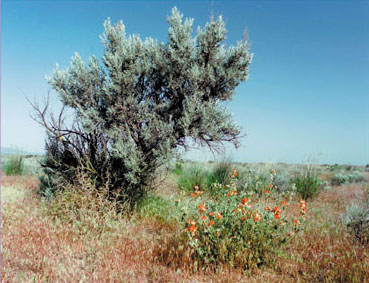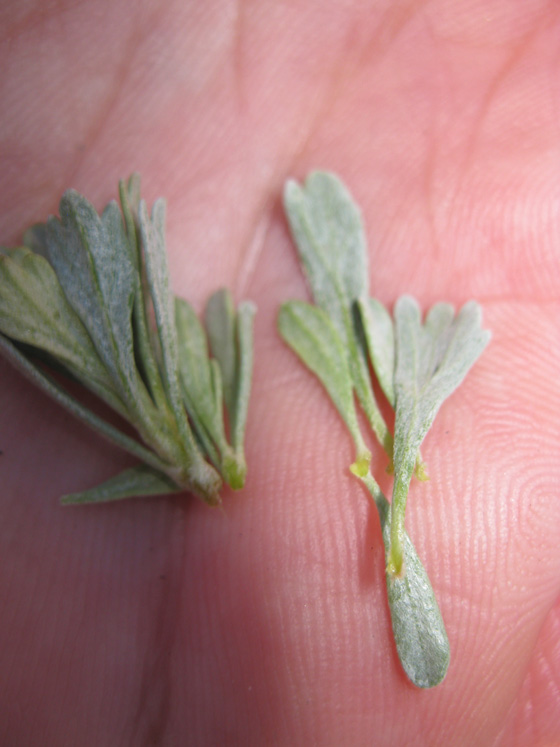| PSC 2620: Woody Trees and Shrub | Course Home | Week 11 |
Artemisia tridentata - Big Sagebrush
Plant Viewer
 |
 |
| Big Sagebrush is a rather unruly plant with a wild and irregular form. | The leaves are a silvery-gray color and spatulate in shape. The end of the leaf typically has three lobes. Image: Stan Shebs |
Plant Description
Artemisia tridentata, or Big Sagebrush, is a native evergreen shrub that can vary widely in size and form. Most Big Sagebrush grows to be 2-6 feet high, but it can reach as much as 10 feet high. It has a loosely rounded form, but has an irregular outline. It is extremely drought tolerant and performs best in poor soil that are well-drained.
The leaf is gray green in color and has a spatulate shape with the tip of the leaf having three lobes, creating the look that the leaf has toes. The leaf is pubescent. In the fall clusters of yellow flowers emerge on stalks. They are noticeable, but not particularly attractive. The bark is a gray color and exfoliates in long strips. New growth is pubescent, giving it a silvery sheen.
Landscape Use
Not suited to use in most landscapes, it is ideal for naturalized landscapes or in very dry conditions. It should not be used near structures as the leaves have a high oil content and so pose a fire hazard.